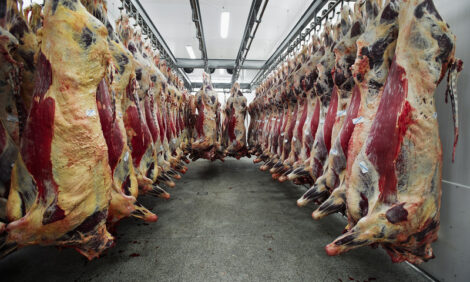



Tyson Sides With USDA On Canada Beef Imports
US - Wednesday's discovery of Canada's ninth case of mad cow disease has several interested U.S. cattle groups now voicing opposition to the American government's plan to fully resume imports of older Canadian cattle.Tyson recently reported its beef export sales were still only 32 percent of the pre-BSE highs recorded in 2003, despite some key markets opening several months ago. The company is the largest beef producer in the world.
Company officials said in an emailed statement Friday they support the view of the American Meat Institute on the full restoration of cattle and beef trade with Canada.
"As AMI (the meat institute) has noted, it's scientifically justified and appropriate under international animal health guidelines. The import of older Canadian beef animals would not have a direct impact on our operations, since our U.S. beef plants typically process cattle under the age of 30 months."
In 2006, Canada reported five new cases of BSE, including one in a cow born five years after the feed safeguards were adopted. Mad cow is also known as bovine spongiform encephalopathy or BSE.
The United States Department of Agriculture has proposed free movement of live cattle age 30 months and up to resume crossing the border and the proposed rules are up for public review until March 12.
Travis Justice spokesman for the Arkansas Beef Council said this new BSE case raises concern because it is the older cattle -- more than 30 months of age -- that are at an increased risk for developing BSE.
"A little more caution might be in order since this new discovery. I think extending the March 12 deadline for public review on the proposed rule might be wise. We've waited three years, what's a few more months," Justice said.
BSE has cost the U.S. beef industry billions of dollars in trade since the first case was discovered on U.S. soil in December 2003.
Source: The Morning News


